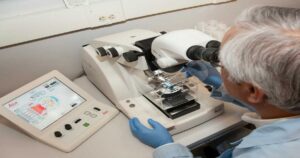Do you know you can now wear technology?
With the help of wearable technology, it’s now easier to keep track of useful information in one go! This go-to technology has made people’s lives easier and smoother health-wise.
In the last five years, more people have started using wearable technology to monitor health data and live healthier lifestyles.
According to the Deloitte Global Survey, today, more than 80% of people are interested in using wearable technology. Statista also studied that the ear-worn wearable technology market will be worth more than 44.16 billion US dollars by 2023. These data show that customers are gravitating toward wearable technology due to its simplicity and convenience.
The Tech is Getting Smarter
Wearable technology has enabled the concept of self-checking, evaluation and monitoring of certain health conditions.
The Internet of Things (IoT) technology is transforming and improving the entire lifestyles of millions of people. So it’s no surprise that the technology is spreading. Thanks to IoT and AI, which have pushed these technologies into individuals’ hands in the form of smartwatches, fitness bands, and other devices. In this case, app development has also been a critical success factor.
Consumers of all age groups actively use wearable technology for multiple physical benefits, such as monitoring daily activities (running, walking), water intake, heartbeat, sleep cycles, blood pressure, oxygen level, and mobility levels. In fact, the tech helps them to stay motivated by maintaining and extending their good habits.
Wearables can measure these characteristics through an effective data model that is instantly responsive. The readings can be saved, displayed, or forwarded to a doctor for medical study. This interface of wearable technology saves money and time traveling to clinics, hospitals, GPs, and other medical facilities.
The next feature that only wearable technology provides is reminders and inspiring information! Due to the addition of automatic functionalities, users have invested considerably in wearables and sparked the usage at the current time.
Furthermore, wearable technology is also seen in other medical devices such as ECG monitors, which is again a cutting-edge consumer electronic device that users can use to measure electrocardiograms at home. A Deloitte study found that due to the rising demand and supply together, nearly 200 million wearable gadgets will be marketed globally by 2023.
Transforming Healthcare Towards Intelligence
The pandemic accentuated the importance of wearable technology the most, particularly for health monitoring. As a result, the technology was available in every second home.
Wearable innovation is exceptional with the advancements in sensors, artificial intelligence, machine learning, and algorithms. Sensor data provides insights regarding an individual’s activity levels, cardiac pattern discrepancies, and other aspects. For example, many companies and manufacturers employ PPG, Raman spectroscopy and infrared spectrophotometers to enable blood pressure monitoring features in smartwatches and portable medical devices.
The combination of technology with intelligence is creating a whole new world of healthcare where individuals can track, record, and improve their health issues in a lesser timeframe.
A Committed Future of Healthcare
So, will technology for health improvement thrive?
The answer is yes. Wearable technology delivers real-time health data and allows consumers to improve their health without incurring high costs. Consumers’ willingness to share their data with healthcare professionals indicates a surge in future demand for wearable technology gadgets.



